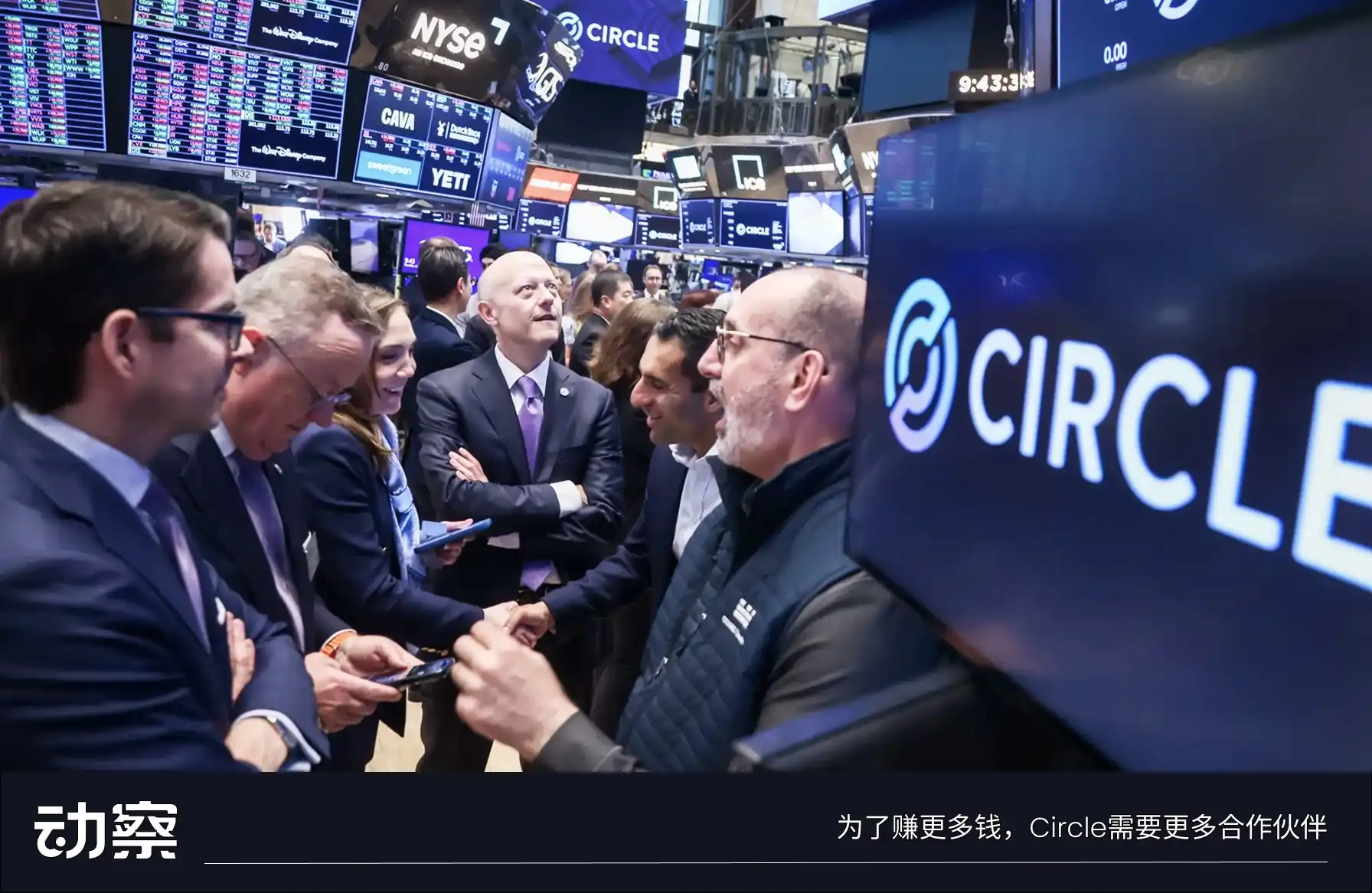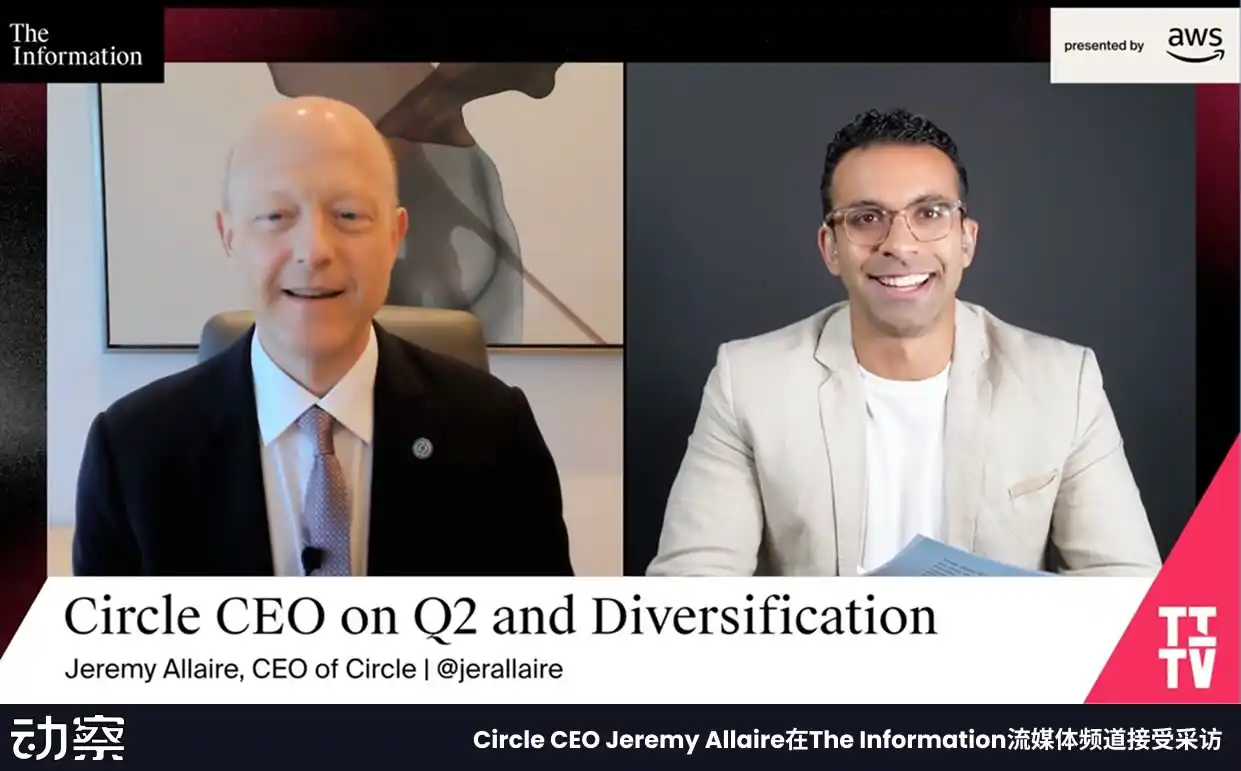

On the first earnings report night after going public, Circle delivered a complex answer of "book losses and operational growth": total revenue and reserve income for the second quarter reached $658 million, a year-on-year increase of 53%, with adjusted EBITDA of $126 million, up 52% year-on-year. Meanwhile, USDC continued to expand on the circulation side, with an outstanding circulation volume of $61.3 billion at the end of the period, capturing a 28% market share in stablecoins. However, due to two non-cash factors triggered by the IPO, including large stock-based compensation and changes in the fair value of convertible bonds totaling $591 million, the company recorded a net loss of $482 million.
Outside of the earnings report, the competitive landscape of the industry was rapidly rewritten this summer. The "GENIUS Act" was officially implemented, bringing the boundaries between "bank-issued stablecoins" and "licensed non-bank issuers" to the forefront. Circle's Chief Strategy Officer, Dante Disparte, candidly stated in a recent interview: the real competition has just begun, and it remains uncertain whether banks will hastily issue their own coins.
Circle's partnership landscape is also expanding.
Management mentioned in the conference call the deepening cooperation with mainstream exchanges such as Binance and OKX, as well as integration with payment networks like Stripe, Visa, Mastercard, and banking infrastructure providers like Fiserv; at the same time, the increase in USDC balances on the Coinbase platform and new partner distribution agreements have also raised distribution-related costs this quarter. These structural tensions of "growth—sharing—cost" are shaping the business model and ecological distribution path of USDC.
Meanwhile, Circle also announced its self-developed blockchain Arc for stablecoin finance. It uses USDC as the native gas, pursuing ultra-high settlement speed and low volatility rates, and introduces optional privacy and compliance audit disclosure mechanisms for institutional scenarios, seen as a key step in its transition from a "single issuer" to a "full-stack platform."
Last night, Circle CEO Jeremy Allaire addressed several of the most pressing questions from the public during the earnings call and a live interview with The Information:
- Why is there a book loss despite high growth?
- The future competitive relationship between bank and non-bank stablecoins in the context of the "Genius Act";
- The "game-like cooperation" with exchanges and the layout of new partners;
- Is there consideration to apply for a license in Hong Kong?
- The strategic goals of the Arc chain and its industry ecological position.
Dongcha Beating has compiled the key questions and answers for readers to quickly and accurately understand Circle management's views on the industry and the company's plans (for the full earnings call transcript, please refer to "Circle Q2 2025 Earnings Call Transcript" below):

Subscription fees, service fees, and transaction fees: management plans to increase revenue sources
- In the second quarter of this year, Circle's revenue grew by 53% year-on-year, but reserve interest still accounted for a large portion. How does the company plan to reduce this dependency?
Jeremy Allaire: Our goal is to build the world's largest regulated stablecoin network, which is still in its early stages. Regardless of whether the future stablecoin market grows at a compound annual growth rate of 90% or 25%, the inflow scale will be enormous, and we hope to continue expanding USDC's share.
In the past, the company mainly monetized the currency supply of USDC and relied on partners to drive distribution. However, since last year, we have launched new products at the protocol layer, blockchain infrastructure, developer tools (such as Circle Wallets), and application layer (such as Circle Payments Network, CPN), with related revenue growing by 250% year-on-year this quarter.
Next, we will introduce subscription fees, service fees, transaction fees, and other higher-margin models, and we have communicated on Wall Street that these revenues could be quite substantial in the coming years.
Adjusted EBITDA increased by 52% year-on-year, with a profit margin of 50%. This quarter, the RLDC profit margin improved by over 200 basis points year-on-year, a significant portion of which comes from new business growth. We are building a full-stack system from infrastructure, stablecoin layer to payment network and developer tools, operating in synergy to create multiple monetization channels, which is a necessary condition for the development of the internet financial system.
- The circulation volume of USDC in the second quarter was $61 billion. Where does the growth momentum come from? What are the future incremental opportunities?
Jeremy Allaire: Recent growth reflects the global market's "green light" signal for stablecoins. This is not only due to the activity in the digital asset market but also indicates that stablecoins are now seen as usable digital cash tools. With a year-on-year growth rate of 90% and a 49% increase year-to-date, there is enormous growth potential ahead.
The growth of stablecoins is largely a result of economic activity. The digital asset market is the starting point, but interest in various segments of financial services is accelerating, with potential lasting for decades. Third-party forecasts vary from a CAGR of 25% to 90%, while our internal model benchmark is 40%, which can still yield considerable returns in an uncertain environment.
- How do you view the adoption of USDC in cross-border remittances?
Jeremy Allaire: The demand for cross-border remittances is growing, including both C2C (individual transfers) and B2B corporate capital flows. This quarter, we expanded our cooperation with Remitly, MoneyGram, ZEPS, etc., with CPN being a primary application scenario for cross-border remittances.
The advantage of USDC lies in the global liquidity network and the deposit/withdrawal system built over the years, covering key nodes such as banks and payment service providers, allowing funds to be settled at low cost between different fiat currencies, electronic currencies, and bank accounts. This network effect and delivery capability are difficult to replicate; simply "issuing a coin" cannot solve the terminal issues of cross-border settlement.
- Where does the $5.9 trillion on-chain transaction volume reported in the earnings come from?
Jeremy Allaire: USDC on-chain transactions are spread globally, from Europe and America to emerging markets and developing countries, with P2P payments being widely used in financial super applications. These transactions include not only fund transfers between exchanges but also various uses such as savings, investments, and payments.
Foxkeen (CFO): The on-chain transaction volume covers almost all financial service use cases, from C2B, B2B payments to cross-border settlements. Compared to traditional systems, this is the first universal internet architecture aimed at capital flow, so different scenarios are intertwined on-chain, making it difficult to accurately separate them.
- To create a "winner-takes-all" market, will Circle accept higher distribution costs in exchange for growth?
Jeremy Allaire: We are willing to collaborate with institutions that drive network growth, and the cooperation structure varies by partner type; it is not simply a matter of ceding reserve income. The key is a win-win, growth-oriented approach that can yield substantial effects in transaction speed, market share, USDC holdings, and more.
Three long-term factors supporting RLDC profit margins: first, enhanced network effects will drive growth in both internal and external USDC holdings; second, increased USDC holdings on our own platform will provide us with a more flexible economic model; third, high-margin value-added services driven by new products will monetize the funds within the network. The combination of these three will steadily improve profit margins.
Actively connecting with "To Bank" partners, gradually reducing "exchange dependency"
- Your revenue-sharing agreement with Coinbase is a focus of external attention. Will this proportion decrease in the future?
Jeremy Allaire: This quarter, the stock of USDC on the Circle platform grew nearly tenfold year-on-year, accounting for about 10% of the total circulation, indicating that more and more companies are building their businesses directly based on our infrastructure (such as Circle Wallets, Circle Mint).
These collaborations on the platform give us greater flexibility in designing economic relationships and help reduce reliance on a single distribution partner. If most businesses operate on our own tech stack in the future, the revenue-sharing structure with platforms like Coinbase will gradually be reshaped.
Our goal is to expand the overall size of the "cake" of stablecoins and attract more participants from different fields, including banks, payment companies, capital market institutions, and internet enterprises. Coinbase has played a significant role in promoting USDC, but now the new compliance environment is prompting more traditional institutions to enter, and this diversification will significantly accelerate network growth.
- How does the cooperation with OKX differ from other exchanges?
……
For the full content, please visit the 【Dongcha Beating】 public account
免责声明:本文章仅代表作者个人观点,不代表本平台的立场和观点。本文章仅供信息分享,不构成对任何人的任何投资建议。用户与作者之间的任何争议,与本平台无关。如网页中刊载的文章或图片涉及侵权,请提供相关的权利证明和身份证明发送邮件到support@aicoin.com,本平台相关工作人员将会进行核查。




